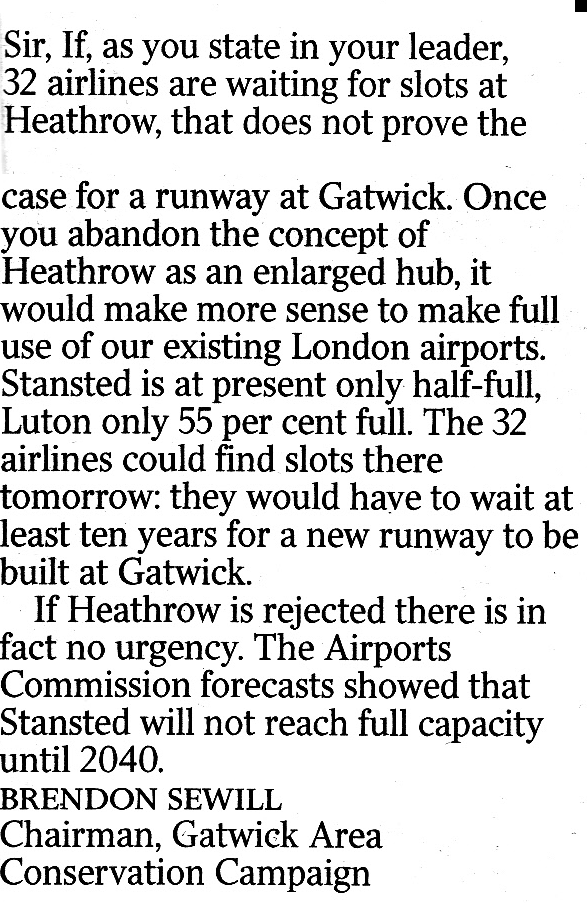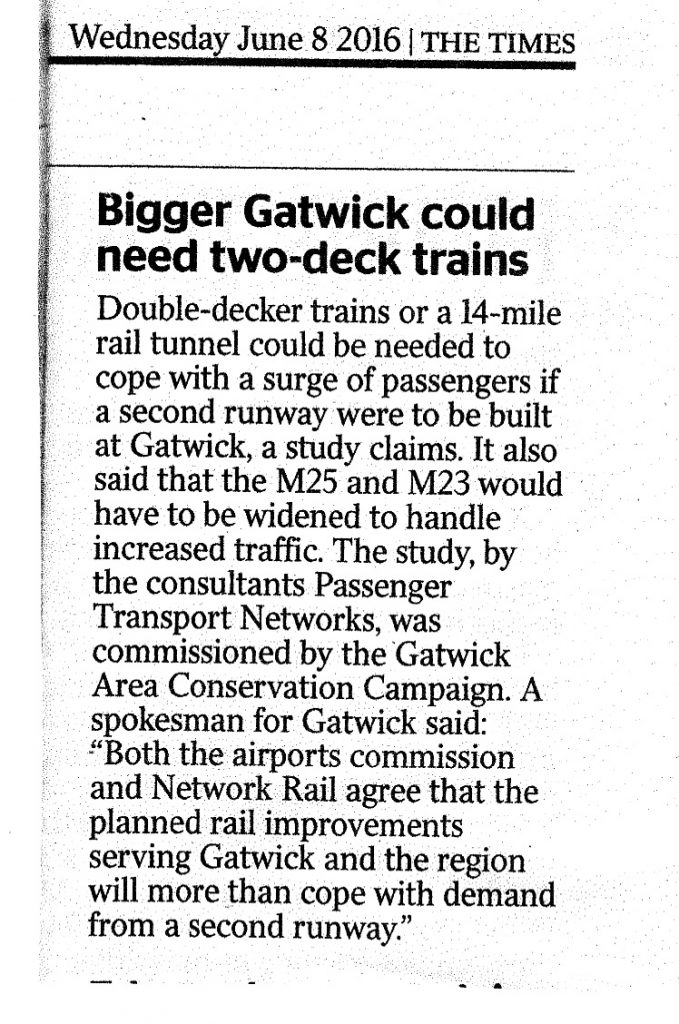Gatwick Chairman writes to David Cameron re-hashing unconvincing claims on desirability of its 2nd runway
Gatwick has made its last ditch attempt to persuade the government to let it have another runway. It is thought likely that some runway decision will now be made by early September at the latest, if it is not made before about 18th July. Gatwick Chairman Sir Roy McNulty has written to David Cameron, hoping to persuade him that Gatwick will not cost the air passenger any more than £15 per flight. Gatwick claims they can manage the noise levels, though are not entirely clear how. They hope sharing out the noise over more people will keep the numbers within the 57 dB and the 55 Lden to manageable levels. They hope to get the runway started before the next election, thereby not having given the electorate the change to vote on the matter – as the Airports Commission announcement in July 2015 was deliberately after the last election in May 2015. They claim there will be no cost to the taxpayer, but there are estimates of possibly £12 billion by TfL for the necessary transport work to deal with another 40 million passengers. Gatwick hopes its paltry £46.5 million offer will cover all that. And Gatwick claims it will never have an air pollution problem – rather ignoring the pollution caused by the inevitable traffic, as there is inadequate public transport. Looked at in detail, the offers (like those of Heathrow a few weeks earlier) are very threadbare indeed. AirportWatch comments, and links to evidence, on the letter copied below.
.
Tweet
Gatwick lobbies David Cameron with open letter on third runway
.
Gatwick Board writes to the Prime Minister setting out eight new pledges guaranteeing Britain a new runway by 2025
07/06/2016 ( Gatwick Airport Press Release)
On behalf of the Board and Shareholders of Gatwick Airport Limited, Chairman Sir Roy McNulty has today written to the Prime Minister setting out a series of pledges which offer a road map to delivering a new runway for Britain.
The pledges to the Prime Minister that Gatwick has outlined today represent a fair deal for the UK and cover:
- The deliverability of Gatwick’s new runway
- Guaranteed and balanced economic growth across the UK
- A cap on passenger fares with more competition
- The pledge that Gatwick will require no taxpayer funds
- Gatwick’s legal air quality
- A cap on the number of people most affected by noise
- An industry-leading compensation scheme, and
- Shareholder commitment to the second runway project.
The full text of Gatwick’s letter to the Prime Minister can be accessed here.
.
The letter:
The Rt Hon Mr David Cameron MP Prime Minister
.

Comment from Sally Pavey, Chair of CAGNE:

